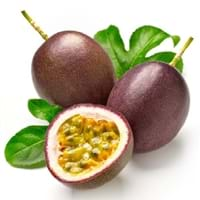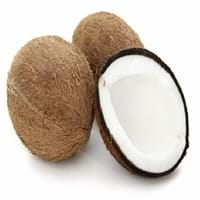Health Benefits
Asthma treatment, Heart care, Regulates Blood Sugar, Muscle pain relief, Reduces nervous tension
Acidity treatment, Acts as natural antibiotic, Anti-oxidant properties, Aphonia treatment
General Benefits
Boosts immune system, Controls blood pressure, Digestive aid, Fights against infections, Helps in weight loss
Anti-inflammatory properties, Body hydration, Boosts immune system, Controls blood sugar levels, Digestive aid, Fights against infections, Flu treatment, Healing of wounds, Helps in weight loss, Maintains healthy cholesterol level
Skin Benefits
Anti-aging benefits, Skin revitalization
Anti-aging benefits, Heals sunburn, Hydrates skin, Reduces wrinkles, Skin rejuvenation, Skin revitalization, Treatment of skin diseases
Hair Benefits
Protects hair
Promotes longer and healthier hair, Regulates hair growth, Rejuvenates scalp, Shiny hair, Treatment of dandruff
Allergy Symptoms
Anaphylaxis, Breathing difficulty, Decrease in blood pressure, Dizziness, Skin rash, Swelling of face, Swelling of mouth, tongue or lips
Abdominal pains, Breathing difficulty, Itching in tongue and other parts of mouth, Nasal congestion, Nausea, Runny nose, Vomiting
Side Effects
Stressed heart, Nausea, Vomiting, Possibly unsafe during pregnancy
Allergic reaction, Indigestion, Weight gain
Best Time to Eat
As a snack in the late afternoon, Don't consume at night and before bed, Morning time (before lunch), Strictly avoid empty stomach
Along with meal, Best if taken as a breakfast (or empty stomach), As a snack in the late afternoon, Morning time (before lunch)
Vitamin B5 (Pantothenic Acid)
Not Available
Vitamin C (Ascorbic Acid)
Vitamin K (Phyllochinone)
Phytosterol
Not Available
Calories in Fresh Fruit with Peel
Not Available
Not Available
Calories in Fresh Fruit without Peel
Calories in Frozen Form
Not Available
Not Available
Type
Tropical
Tree fruit, Tropical
Season
All seasons
All seasons
Varieties
Australian Purple, Common Purple, Kapoho Selection, Pratt Hybrid, University Selection No. B-74, Waimanalo Selection and Yee Selection
Tall Varieties- West Coast Tall, Laccadiv Micro, Andaman Ordinary, Fiji, Kappadam, San Ramon, Philippines, Spicate, and Pratap. Dwarf Varieties- Chowghat Orange Dwarf (COD) and Chowghat Green Dwarf (CGD)
Color
Purple, Yellow
Brown, Green
Inside Color
Yellow
White
Taste
Sweet, Tart
Juicy, Sweetish
Origin
Argentina, Brazil, Paraguay
America, India
Grows on
Not Available
Trees
Soil Type
Sandy loam
Clay, Sand
Climatic Conditions
Frost free, Sunny, Warm
Hot, Humid
Facts about
- Passion fruit tree can grow up to 20 feet in a year.
- More than 200 species of passion fruit are found near Amazon river.
- Oil extracted from its seeds is used in various cosmetics.
- Burning coconut's husk helps repel mosquitoes.
- Surveys say that falling coconut kills hundreds every year.
- Coconut water is used as a substitute Blood Plasma & is called "father of modern tissue culture science".
Top Producer
Brazil
Indonesia
Other Countries
Colombia, Ecuador, Indonesia, Kenya, Peru
Brazil, India, Philippines, Sri Lanka
Top Importer
Brazil
United States of America
Top Exporter
Ecuador
Philippines
Botanical Name
Passiflora edulis
Cocos nucifera
Synonym
Passiflora edulis f. edulis or Passiflora edulis f. flavicarpa
Not Available
Subkingdom
Tracheobionta
Tracheobionta
Division
Magnoliophyta
Magnoliophyta
Class
Magnoliopsida
Liliopsida
Subclass
Dillenhidae
Arecidae
Order
Malpighiales
Arecales
Family
Passifloraceae
Arecaceae
Species
P. edulis
C. nucifera
Generic Group
Passion Flower
Arecaceae
Difference Between Passionfruit and Coconut
We might think that Passionfruit and Coconut are similar with respect to nutritional value and health benefits. But the nutrient content of both fruits is different. Passionfruit and Coconut Facts such as their taste, shape, color, and size are also distinct. The difference between Passionfruit and Coconut is explained here.
The amount of calories in 100 gm of fresh Passionfruit and Coconut with peel is Not Available and Not Available and the amount of calories without peel is 97.00 kcal and 354.00 kcal respectively. Thus, Passionfruit and Coconut belong to and category.These fruits might or might not differ with respect to their scientific classification. The order of Passionfruit and Coconut is Malpighiales and Arecales respectively. Passionfruit belongs to Passifloraceae family and Coconut belongs to Arecaceae family. Passionfruit belongs to Passiflora genus of P. edulis species and Coconut belongs to Cocos genus of C. nucifera species. Beings plants, both fruits belong to Plantae Kingdom.









